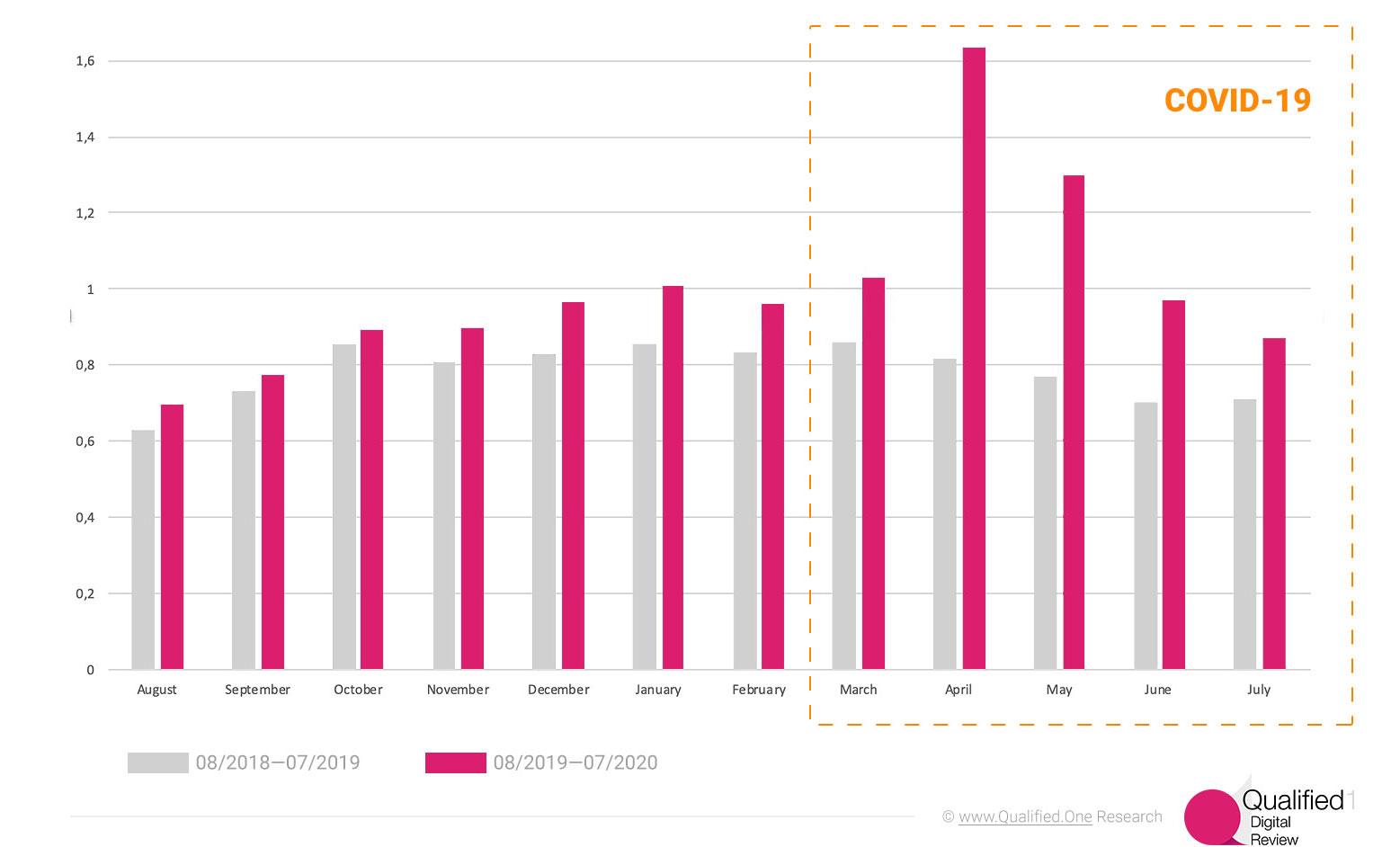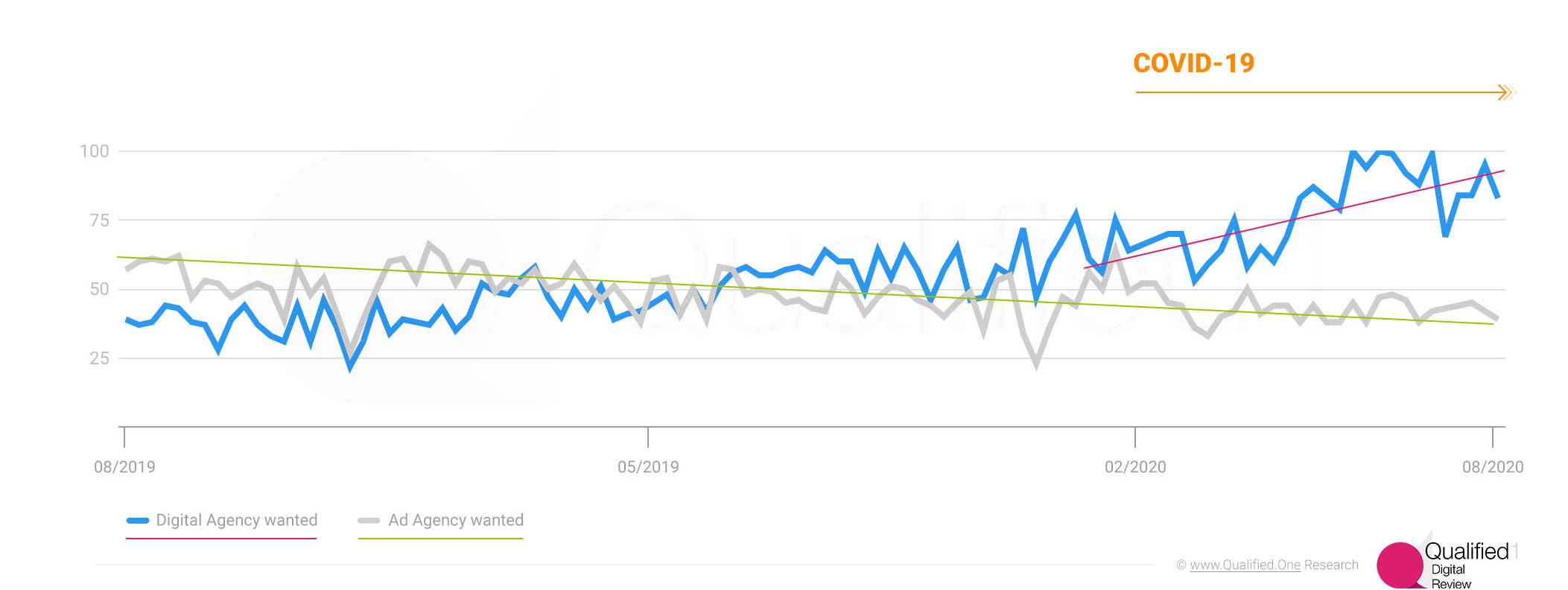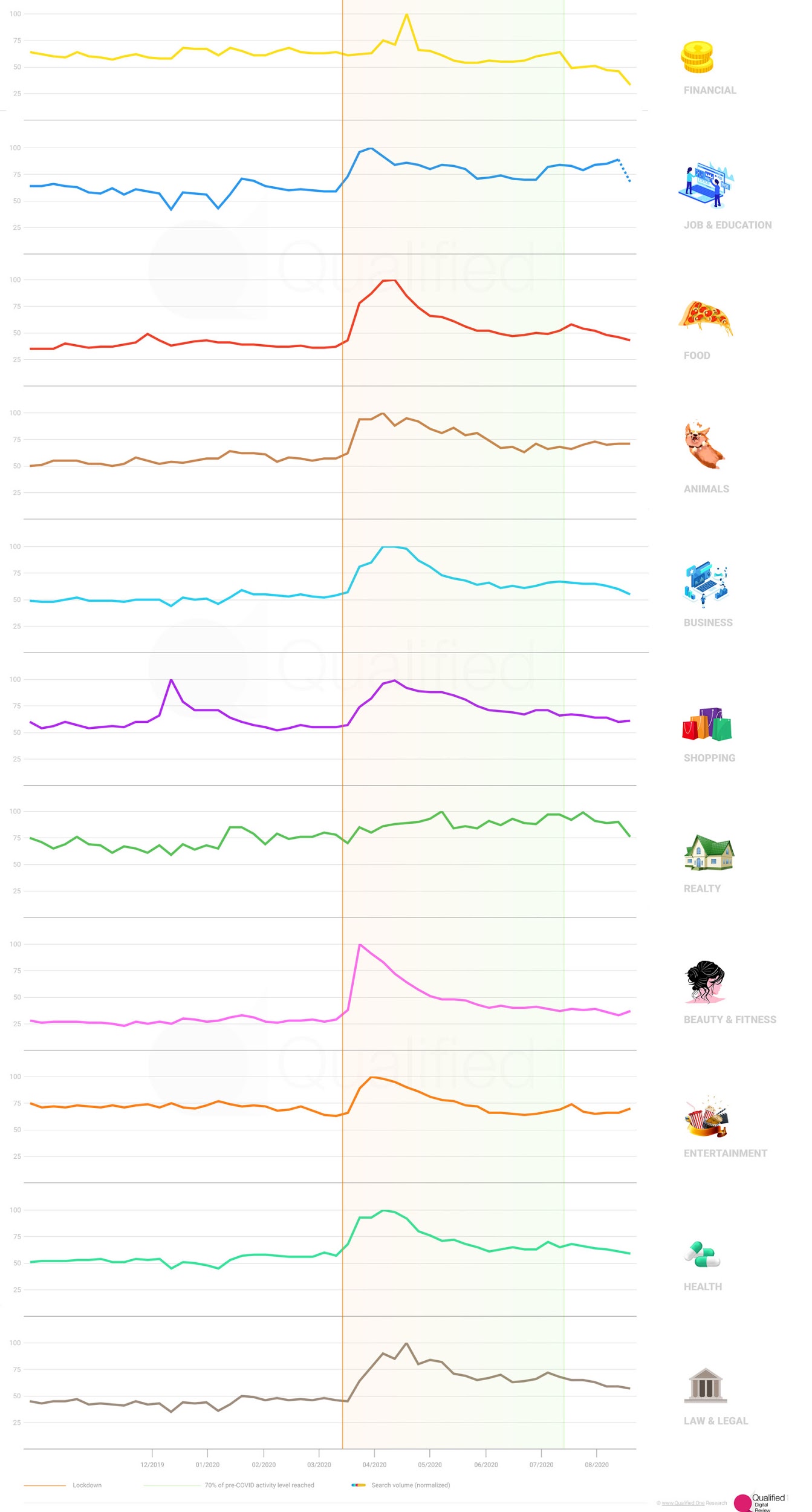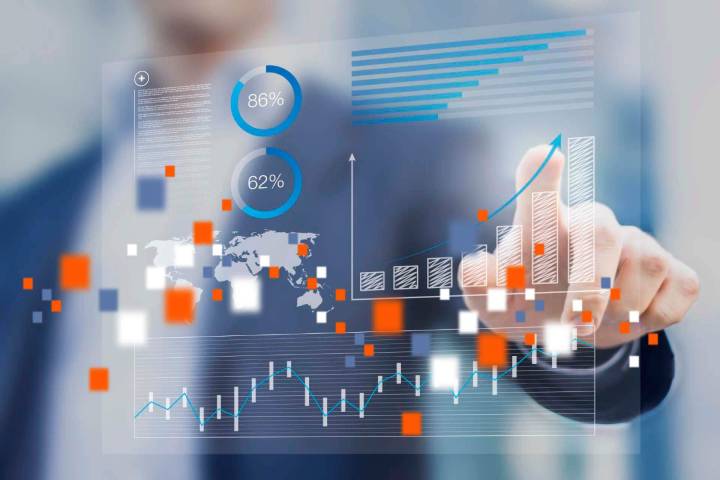Digitalization has been a consistent trend for years, but the situation became even more distinct from the beginning of the pandemic. Let us look at how the crisis affects various types of business and make a prediction about when we could get back to everyday life.
1. Customer demand, lockdown, and Gross Domestic Product

As expected, there is a direct relationship between the strength of restrictions and the GDP value. Less trivial (but still not surprising) is that the web search volume corresponding to the queries with purchase intent is quite similar to the curve representing the restrictions level. That can be easily seen via the following graph considering the United States:
2. Informational queries: a splash

As of March 28 (2020), we noted no significant growth of informational queries in our previous research. Predictably, it turned out to be just a question of time: search volume associated with words “how,” “why,” and “what” exploded in April, and it is still on the high levels compared to the corresponding numbers of the 2019 year.
3. Recovery: digital-inspired prediction

Data coming from various sources allow us to assume that we are currently in an almost linear recovery regime. We elaborate on four independent data sets to make a prediction considering the back-to-normal moment.
Both digital sources (namely, the search volume associated with isolation and goods delivery) show a similar behavior:
According to these estimations, the crossing point is likely to be reached by the end of October 2020.
We also take into account offline stats.
Whereas the number of retail store visits seemingly shows a bit optimistic picture, the restaurant sector, on the contrary, pushes the crossing point towards the end of the year:
4. Marketing & Advertising | Digital agencies to dominate Ad market

Switching to Digital is an evident trend, but what are preferable ways of doing that? We found specific nuances on the popularity of different marketing channels.
First, it is worth noting that the crisis has bolstered the domination of Digital Marketing compared to classic advertising.
That can be seen from the following picture, which represents both the search volume trend associated with Ad agencies (decreasing) and Digital (increasing rapidly with the COVID crisis).
The thing that seems to be characteristic is the marketing investment horizon. In the United States, we can observe a distinct pre valuation of digital marketing channels that require mid/long-term investments (Content Marketing, SEO).
Investing in Google Ads and Facebook Ads can be considered in the short-term. There was a fast growth for the paid channels in a 2-3 months after the pandemic began, but we’ve already passed it.

This proportion seems to be specific for the United States: the picture is different in its scope.
5. Migrating to Online | Digital agencies to dominate Ad market
The COVID-19 crisis strongly enhanced the process of digitalization. However, the impact and behavior vary depending on the business sector.
Here is a summary with all sectors put all together.

One can see a remarkable growth for almost all of them except for real estate.
Some businesses experienced a huge tsunami-like increase in search demand associated with online services (Fitness, Food & Beverages).
In other niches like Finance or Entertainment, the effect was relatively moderate.
We comment on each of the mentioned business sectors in the full article.
To conclude, let us emphasize that the crisis turned out to be a digitalizer: even the old-style companies stuck to classic advertisement had to improve their digital presence.
Digital-inspired data can also give us a hint about when our life could (to a certain extent) get back to normal: it is presumably the end of October/November 2020. This prediction is, of course, extremely sensitive to the rapid changes in the epidemiological situation.
Tech Trends
Related posts
Leave a Reply Cancel reply
Hot Topics
Categories
- Ads (5)
- Animes (25)
- Artificial Intelligence (AI) (35)
- Augmented Reality (AR) (10)
- Automotive (9)
- Bitcoin (16)
- Blockchain (24)
- Business (244)
- Business Intelligence (3)
- Cloud Computing (23)
- Computer (128)
- Concrete Technology (1)
- Cryptocurrency (10)
- Cybersecurity (42)
- Data Science (9)
- Database (4)
- DevOps (6)
- Digital Marketing (76)
- Digital Workplace (14)
- Ecommerce (1)
- Education (28)
- Electric Vehicle (EV) (1)
- Electronics & Hardware (17)
- Entertainment (42)
- Fabrication (3)
- FAQ's (1)
- Finance & Marketing (47)
- Gadgets (35)
- Games (8)
- Gear (29)
- HTTPS (1)
- Industry (46)
- Information Technology (90)
- Internet (413)
- Internet of Things (IoT) (41)
- Job (25)
- Machine Learning (6)
- Marketing (92)
- Mobile Apps (21)
- Movies (11)
- Natural Language Processing (6)
- News & Trends (109)
- Programming (4)
- Science & Technology (235)
- Security (81)
- SEO (56)
- Services (36)
- Social Media (73)
- Software (99)
- Sports (1)
- Technology (306)
- Telecom (6)
- TikTok (5)
- Tours & Travels (9)
- Uncategorized (11)
- Virtual Reality (VR) (7)
- VoIP (4)
- Web Technology (42)
- Workforce (17)
- Workspace (6)



Stay connected